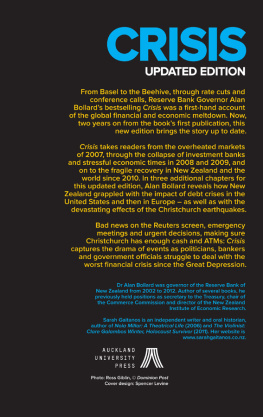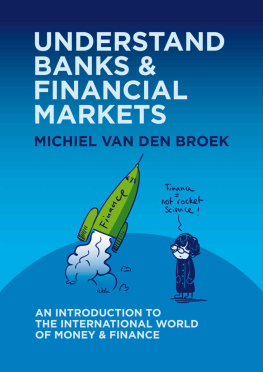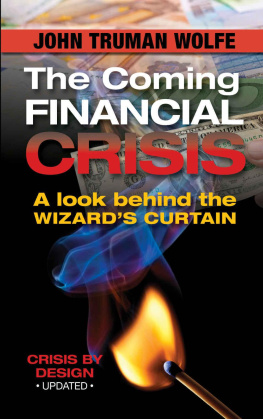SENATOR CARL LEVIN
Chairman
SENATOR TOM COBURN, M.D.
Ranking Minority Member
PERMANENT SUBCOMMITTEE ON INVESTIGATIONS
ELISE J. BEAN
Staff Director and Chief Counsel
ROBERT L. ROACH
Counsel and Chief Investigator
LAURA E. STUBER
Counsel
ZACHARY I. SCHRAM
Counsel
DANIEL J. GOSHORN
Counsel
DAVID H. KATZ
Counsel
ALLISON F. MURPHY
Counsel
ADAM C. HENDERSON
Professional Staff Member
PAULINE E. CALANDE
SEC Detailee
MICHAEL J. MARTINEAU
DOJ Detailee
CHRISTOPHER J. BARKLEY
Staff Director to the Minority
ANTHONY G. COTTO
Counsel to the Minority
KEITH B. ASHDOWN
Chief Investigator to the Minority
JUSTIN J. ROOD
Senior Investigator to the Minority
VANESSA CAREIRO
Law Clerk
BRITTANY CLEMENT
Law Clerk
DAVID DeBARROS
Law Clerk
ERIN HELLING
Law Clerk
HELENA MAN
Law Clerk
JOSHUA NIMMO
Intern
ROBERT PECKERMAN
Intern
TANVI ZAVERI
Law Clerk
MARY D. ROBERTSON
Chief Clerk
Permanent Subcommittee on Investigations
199 Russell Senate Office Building Washington, D.C. 20510
Main Number : 202/224-9505
Web Address : www.hsgac.senate.gov [Follow Link to Subcommittees , to Investigations ]
Wall Street and The Financial Crisis: Anatomy of a Financial Collapse
April 13, 2011
In the fall of 2008, America suffered a devastating economic collapse. Once valuable securities lost most or all of their value, debt markets froze, stock markets plunged, and storied financial firms went under. Millions of Americans lost their jobs; millions of families lost their homes; and good businesses shut down. These events cast the United States into an economic recession so deep that the country has yet to fully recover.
This Report is the product of a two-year, bipartisan investigation by the U.S. Senate Permanent Subcommittee on Investigations into the origins of the 2008 financial crisis. The goals of this investigation were to construct a public record of the facts in order to deepen the understanding of what happened; identify some of the root causes of the crisis; and provide a factual foundation for the ongoing effort to fortify the country against the recurrence of a similar crisis in the future.
Using internal documents, communications, and interviews, the Report attempts to provide the clearest picture yet of what took place inside the walls of some of the financial institutions and regulatory agencies that contributed to the crisis. The investigation found that the crisis was not a natural disaster, but the result of high risk, complex financial products; undisclosed conflicts of interest; and the failure of regulators, the credit rating agencies, and the market itself to rein in the excesses of Wall Street.
While this Report does not attempt to examine every key moment, or analyze every important cause of the crisis, it provides new, detailed, and compelling evidence of what happened. In so doing, we hope the Report leads to solutions that prevent it from happening again.
I. EXECUTIVE SUMMARY
A. Subcommittee Investigation
In November 2008, the Permanent Subcommittee on Investigations initiated its investigation into some of the key causes of the financial crisis. Since then, the Subcommittee has engaged in a wide-ranging inquiry, issuing subpoenas, conducting over 150 interviews and depositions, and consulting with dozens of government, academic, and private sector experts. The Subcommittee has accumulated and reviewed tens of millions of pages of documents, including court pleadings, filings with the Securities and Exchange Commission, trustee reports, prospectuses for public and private offerings, corporate board and committee minutes, mortgage transactions and analyses, memoranda, marketing materials, correspondence, and email. The Subcommittee has also reviewed documents prepared by or sent to or from banking and securities regulators, including bank examination reports, reviews of securities firms, enforcement actions, analyses, memoranda, correspondence, and email.
In April 2010, the Subcommittee held four hearings examining four root causes of the financial crisis. Using case studies detailed in thousands of pages of documents released at the hearings, the Subcommittee presented and examined evidence showing how high risk lending by U.S. financial institutions; regulatory failures; inflated credit ratings; and high risk, poor quality financial products designed and sold by some investment banks, contributed to the financial crisis. This Report expands on those hearings and the case studies they featured. The case studies are Washington Mutual Bank, the largest bank failure in U.S. history; the federal Office of Thrift Supervision which oversaw Washington Mutuals demise; Moodys and Standard & Poors, the countrys two largest credit rating agencies; and Goldman Sachs and Deutsche Bank, two leaders in the design, marketing, and sale of mortgage related securities. This Report devotes a chapter to how each of the four causative factors, as illustrated by the case studies, fueled the 2008 financial crisis, providing findings of fact, analysis of the issues, and recommendations for next steps.
B. Overview
(1) High Risk Lending:
Case Study of Washington Mutual Bank
The first chapter focuses on how high risk mortgage lending contributed to the financial crisis, using as a case study Washington Mutual Bank (WaMu). At the time of its failure, WaMu was the nations largest thrift and sixth largest bank, with $300 billion in assets, $188 billion in deposits, 2,300 branches in 15 states, and over 43,000 employees. Beginning in 2004, it embarked upon a lending strategy to pursue higher profits by emphasizing high risk loans. By 2006, WaMus high risk loans began incurring high rates of delinquency and default, and in 2007, its mortgage backed securities began incurring ratings downgrades and losses. Also in 2007, the bank itself began incurring losses due to a portfolio that contained poor quality and fraudulent loans and securities. Its stock price dropped as shareholders lost confidence, and depositors began withdrawing funds, eventually causing a liquidity crisis at the bank. On September 25, 2008, WaMu was seized by its regulator, the Office of Thrift Supervision, placed in receivership with the Federal Deposit Insurance Corporation (FDIC), and sold to JPMorgan Chase for $1.9 billion. Had the sale not gone through, WaMus failure might have exhausted the entire $45 billion Deposit Insurance Fund.
This case study focuses on how one banks search for increased growth and profit led to the origination and securitization of hundreds of billions of dollars in high risk, poor quality mortgages that ultimately plummeted in value, hurting investors, the bank, and the U.S. financial system. WaMu had held itself out as a prudent lender, but in reality, the bank turned increasingly to higher risk loans. Over a four-year period, those higher risk loans grew from 19% of WaMus loan originations in 2003, to 55% in 2006, while its lower risk, fixed rate loans fell from 64% to 25% of its originations. At the same time, WaMu increased its securitization of subprime loans sixfold, primarily through its subprime lender, Long Beach Mortgage Corporation, increasing such loans from nearly $4.5 billion in 2003, to $29 billion in 2006. From 2000 to 2007, WaMu and Long Beach together securitized at least $77 billion in subprime loans.
WaMu also originated an increasing number of its flagship product, Option Adjustable Rate Mortgages (Option ARMs), which created high risk, negatively amortizing mortgages and, from 2003 to 2007, represented as much as half of all of WaMus loan originations. In 2006 alone, Washington Mutual originated more than $42.6 billion in Option ARM loans and sold or securitized at least $115 billion to investors, including sales to the Federal National Mortgage Association (Fannie Mae) and Federal Home Loan Mortgage Corporation (Freddie Mac). In addition, WaMu greatly increased its origination and securitization of high risk home equity loan products. By 2007, home equity loans made up $63.5 billion or 27% of its home loan portfolio, a 130% increase from 2003.







